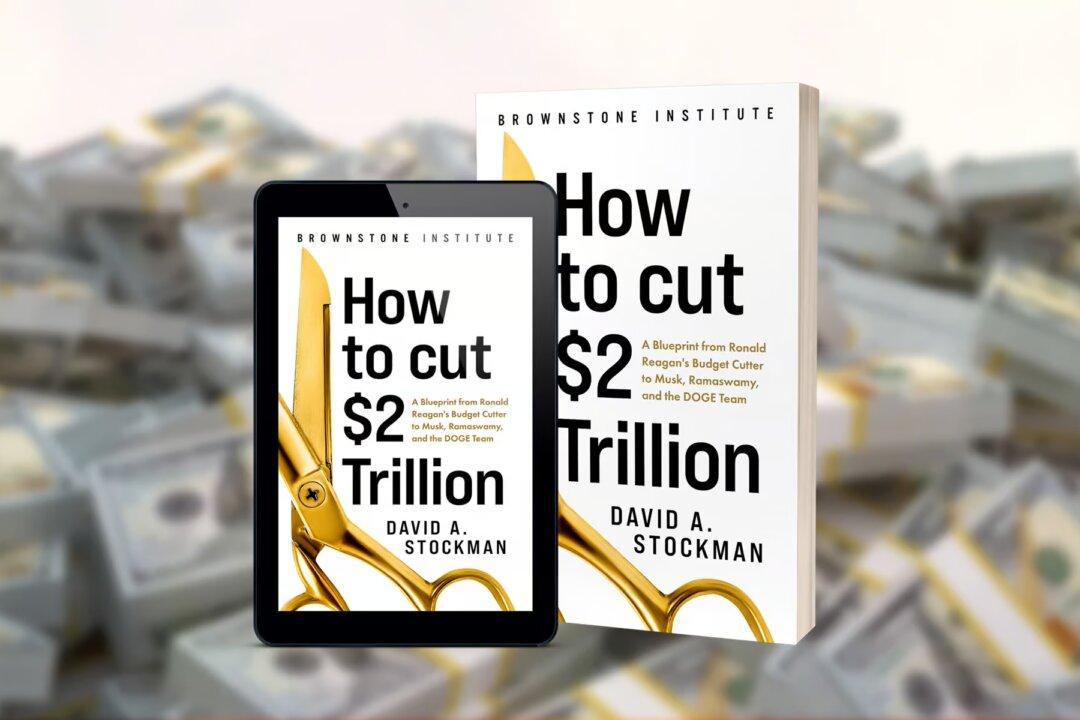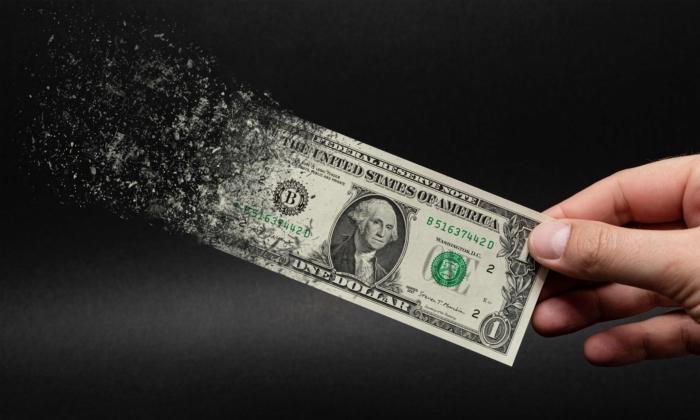We much prefer this measure over real GDP because it removes the abrupt inventory swings from quarter to quarter, which can have out-sized impacts on the headline number. Thus, during the first two quarters of 2022 the reported back-to-back real GDP contraction was owing to inventory liquidation, not an actual shrinkage of current activity.
As it happens, however, inventory swings cut both ways—so the chart below removes this statistical noise and gets to the underlying trend of production, income, and spending.
What has happened, therefore, is that despite upwards of $11 trillion of monetary and fiscal stimmies since Q4 2019, the U.S. economy has lurched along a path to essentially nowhere.
The original lockdown-induced 32 percent annualized plunge in Q2 2020 was followed by a 23 percent annualized rebound in Q3 2020 and then a return to the pre-COVID starting point by Q1/Q2 2021. Thereafter, however, this aggregate indicator of current economic activity has essentially oscillated along the flat line.
- Q3 2021: +0.09 percent;
- Q4 2021: +1.45 percent;
- Q1 2022: -1.24 percent;
- Q2 2022: +1.08 percent;
Y/Y Change in Real Final Sales of Domestic Product, Q4 2019 to Q2 2022

For want of doubt, here is the annualized rate of GDP deflator change for the same 2.5 year period. Self-evidently, it has moved aggressively higher, the very opposite of the flagging rate of gain in real final sales.
- Q4 2020:+1.93 percent;
- Q1 2021: +4.22 percent;
- Q2 2021: 6.04 percent;
- Q3 2021: +5.75 percent;
- Q4 2021: +6.90 percent;
- Q1 2022: +7.93 percent;
- Q2 2022: +8.50 percent;
It’s the reason why the real economy is faltering and stagflation has become embedded: To wit, the gains in nominal income are being more than eaten up by soaring prices, paving the way for the worst bout of high inflation and falling real growth since the 1970s.
Y/Y Change in GDP Deflator, Q4 2019 to Q2 2022

Today’s data dump, in fact, was a warning signal that the U.S. economy may go down for the count as soon as Q3. That’s because the S&P Global U.S. Composite PMI Output Index posted at an abysmal 47.7 in July.
The July reading was down from 52.3 in June and signals a renewed contraction in private sector business activity. As shown in the chart, GDP ordinarily follows the composite output index with a small lag.
There is plenty of evidence, in fact, that large sections of the private sector are already heading south. For instance, inflation-adjust nonresidential construction spending during Q2 2022 was down 12.4 percent from the Q1 2020 peak.
Inflation-Adjusted Construction Spending, Private Nonresidential, Q4 2019–Q2 2022

We also don’t see any reason for the vaunted consumer to rebound, either. In fact, from the time that real PCE shot the moon in April 2021 owing to Joe Biden’s $1.9 trillion stimmy, household spending has been marching downhill at a relentless clip.
Y/Y Change in Real PCE, April 2021 to June 2022

- Mortgage balances—the largest component of household debt—climbed $207 billion and stood at $11.39 trillion as of June 30.
- Credit card balances had a $46 billion increase since the first quarter. The 13 percent year-over-year increase marked the largest in more than 20 years.
- Aggregate limits on cards marked their largest increase in over ten years.
- And auto loan balances increased by $33 billion in the second quarter, continuing the upward trajectory that has been in place since 2011.
The crazy thing, of course, is that Wall Street now thinks that the Fed’s tightening phase will be over by December and that the battle against inflation has been won, thereby enabling a new round of rate cutting and soaring stock prices.
Dream on!







